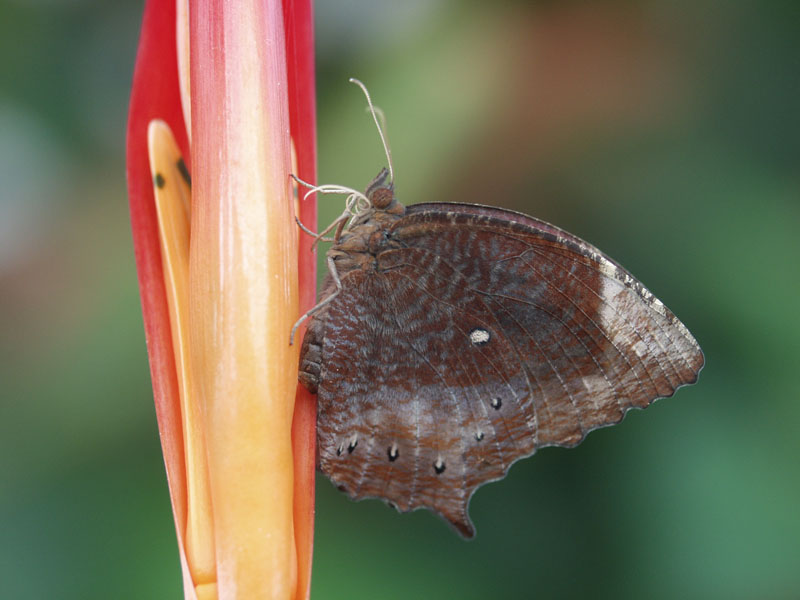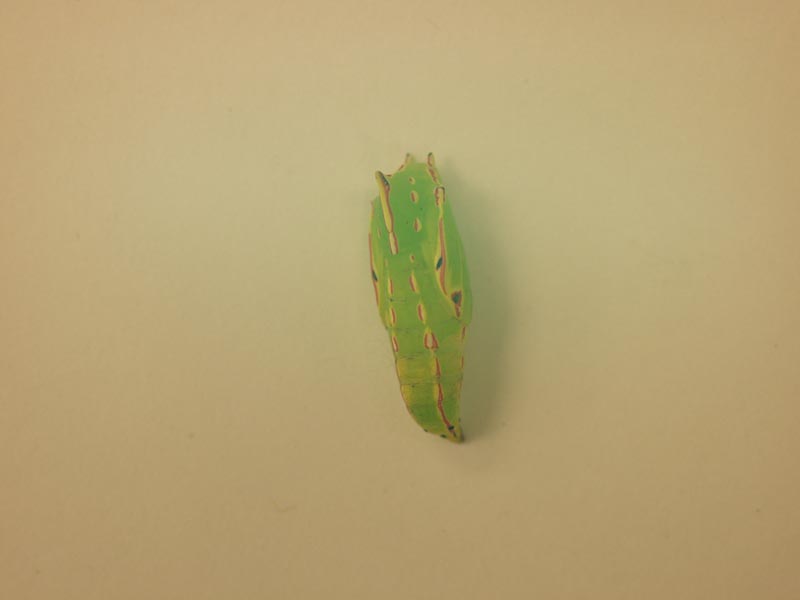


The adults are known to visit a variety of flowers as well as tree sap.
Elymnias is currently unknown. In Greek mythology, Hypermnestra was one of Danaus’ fifty daughters, and the only one that did not kill her husband Lynceus on their wedding night.
The Common Palmfly is primarily observed in forested areas, but they may take brief trips to surrounding areas.
Males patrol their territory looking for receptive females and chasing off other males. From mid- morning to early evening the females search for host plants on which to oviposit. Eggs can be laid on the top or bottom of the leaf but usually near the tip. The larvae feed on the host plants until they are ready to form their pupae on the underside of a host plant leaf.
Adults can be observed in flight from September - March.
The Common Palmfly is sexually dimorphic which means the males and females have different appearances. Along with being sexually dimorphic, the females are geographically dimorphic with an orange form on the western part of their range and a blue form on the eastern half.